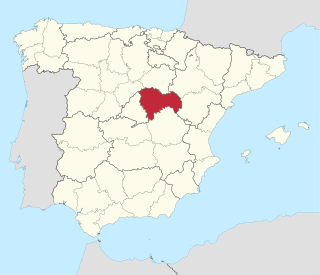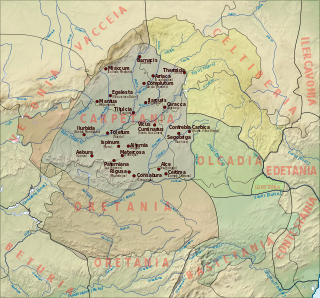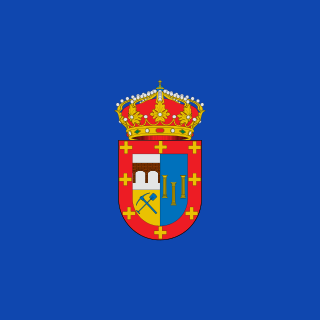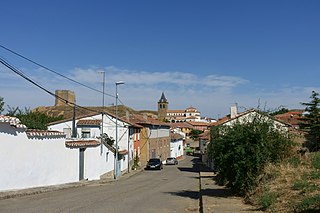
Guadalajara is a province of Spain, belonging to the autonomous community of Castilla–La Mancha. As of 2019 it had a population of 258,890 people. The population of the province has grown in the last 10 years. It is located in the centre of the Iberian Peninsula.

Cuenca is a city and municipality of Spain located in the autonomous community of Castilla–La Mancha. It is the capital of the province of Cuenca.

Segorbe is a municipality in the mountainous coastal province of Castelló, autonomous community of Valencia, Spain. The former Palace of the Dukes of Medinaceli now houses the city's mayor. Segorbe's bull-running week in September attracts 200,000 visitors each year.

Cueva de los Casares is a cave in Riba de Saelices. Discovered in 1933, it contains a number of paleolithic cave paintings, and is most notable for a series of paintings depicting what some have argued is the earliest representation of human understanding of the reproductive process, featuring images of copulation, pregnancy, childbirth, and family life. Mammoths and other animals feature frequently in the illustrations. It was declared Bien de Interés Cultural in 1935.
Ablanque is a municipality located in the province of Guadalajara, Castilla–La Mancha, Spain. According to the 2007 census, the municipality has a population of 157 inhabitants.

Carpetania was an ancient region of what is today Spain, located between the Sierra de Guadarrama, the mountains of Toledo, the river Guadiana and the mountain range of Alcaraz, including approximately, the present independent communities of Madrid and Castile-La Mancha.

Riba de Saelices is a municipality located in the province of Guadalajara, Castile-La Mancha, Spain. According to the 2004 census (INE), the municipality had a population of 168 inhabitants.

Saelices de la Sal is a municipality located in the province of Guadalajara, Castile-La Mancha, Spain. According to the 2004 census (INE), the municipality has a population of 69 inhabitants.

Saelices el Chico is a municipality located in the province of Salamanca, Castile and León, Spain. As of 2016 the municipality has a population of 152 inhabitants.

Saelices de Mayorga is a municipality located in the province of Valladolid, Castile and León, Spain. According to the 2004 census (INE), the municipality has a population of 179 inhabitants.
Antonio Tavira y Almazán,. A member of the Royal Spanish Academy from 1775 to 1807. Famous archeologist who found visigothic remains, near Cabezo del Griego, described since then as Segobriga. He had some clashes with the Spanish Inquisition, related to the regalist wishes of King Carlos IV of Spain to give to the bishop's jurisdiction on the annulment of marriages, he was also the Honorary Chaplain of King Charles III of Spain since 1772, aged 36. A Knight and a Prior of the Military Order of Santiago in Uclés, province of Cuenca, (1788–1789), Bishop of Canarias, (1791–1796), Bishop of Osma, (1796–1798), Bishop of Salamanca, (1798–1807).

Cea is a municipality located in the province of León, Castile and León, Spain. According to the 2010 census (INE), the municipality has a population of 530 inhabitants.

Martín Almagro Gorbea is a Spanish prehistorian.

The Cratistii were an ancient pre-Roman, stock-raising people whose lands were situated along the upper Tagus valley, in the elevated plateau region of the western Cuenca and northeast Province of Teruel.

Segóbriga was an important Celtic and Roman city, and is today an impressive site located on a hill near the present town of Saelices. Research has revealed remains of important buildings, which have since been preserved and made visible in the Archaeological Park. It was declared a National Monument on June 3, 1931, and is now considered cultural heritage under the official denomination Bien de Interés Cultural which comes with extensive legal protections.

Segóbriga is a former Roman city near Saelices, in the province of Cuenca in Spain. It is possibly one of the most important archaeological sites of the Spanish Meseta.
Alberto del Moral Saelices is a Spanish footballer who plays as a midfielder for Real Oviedo.

















